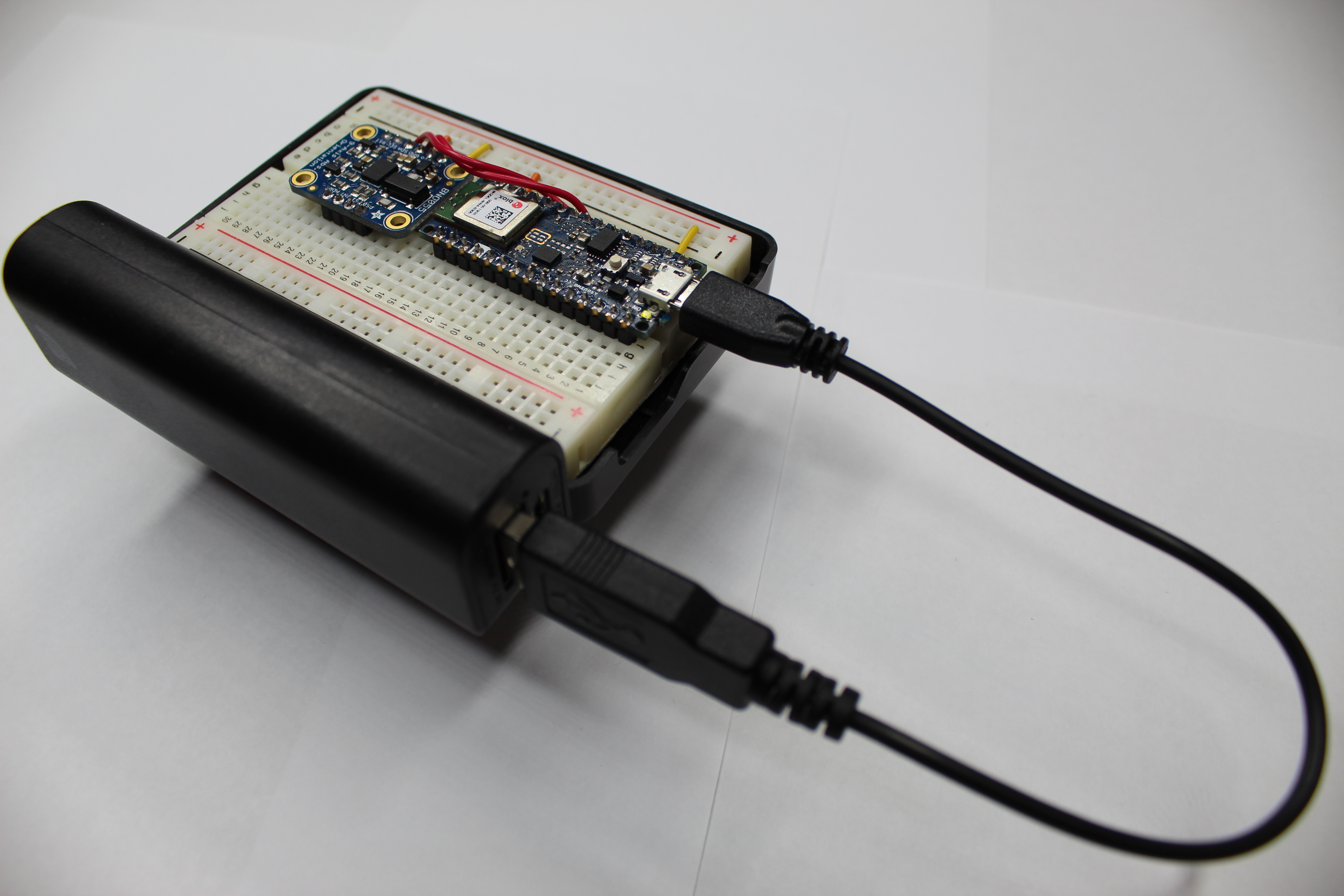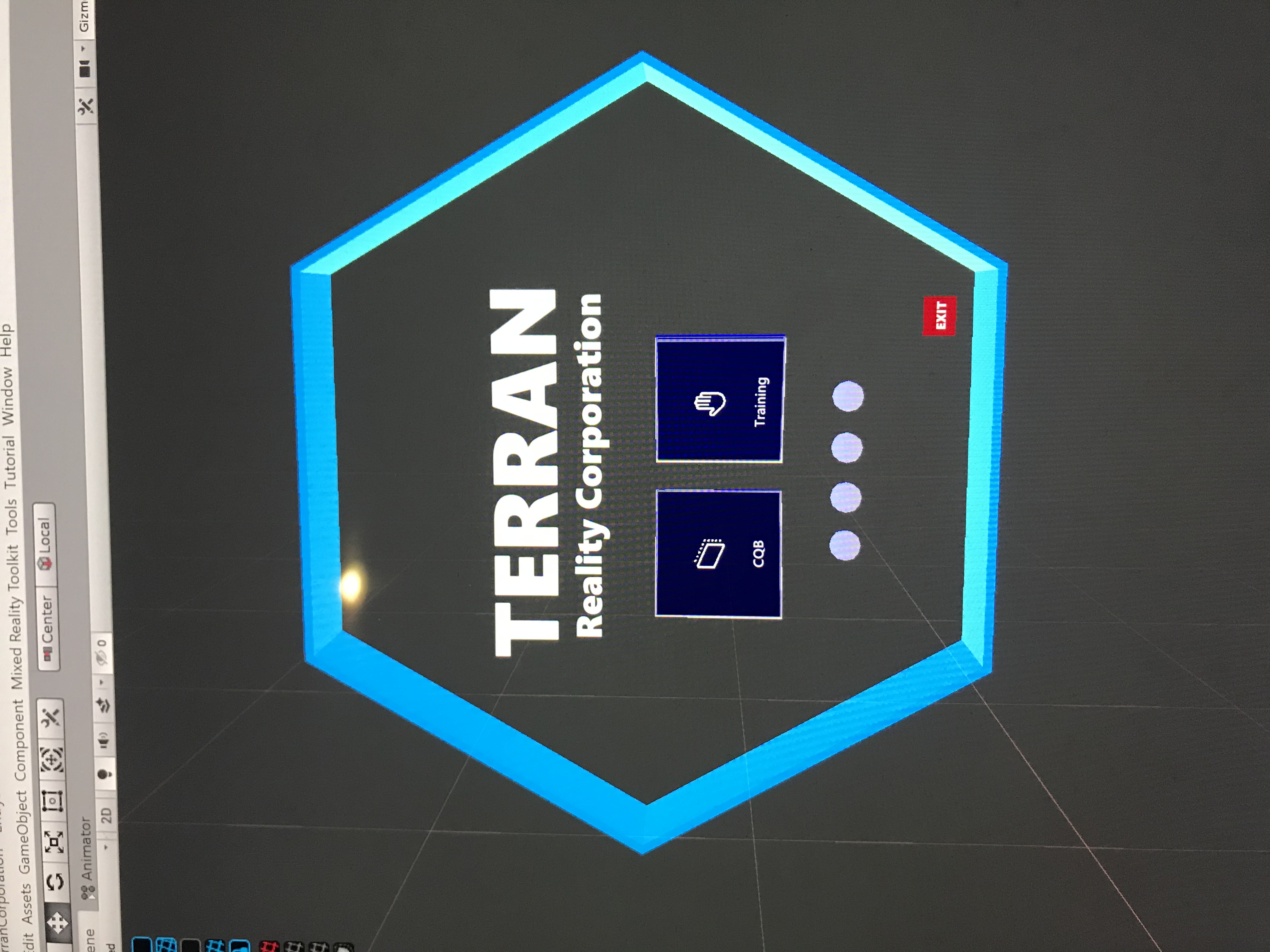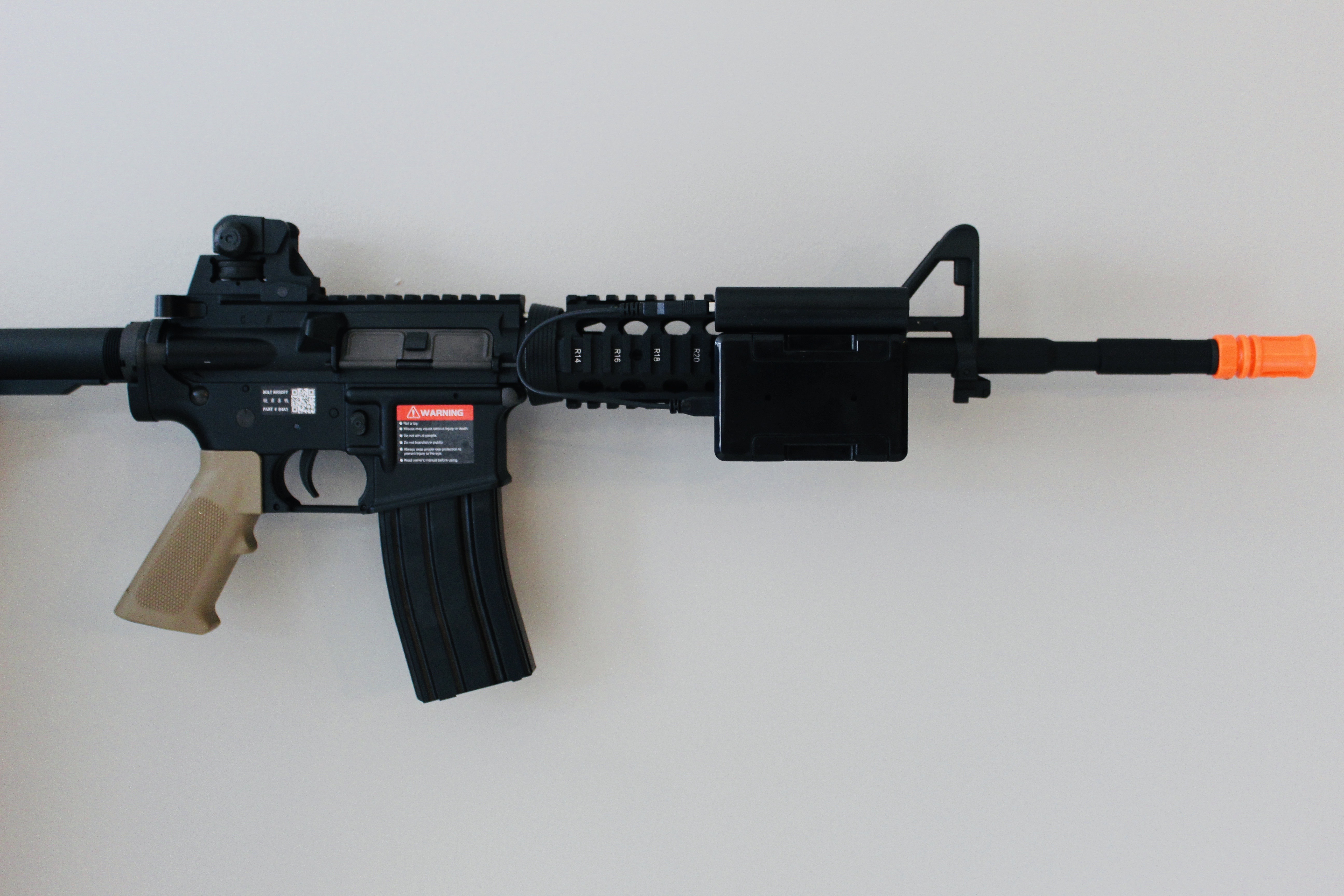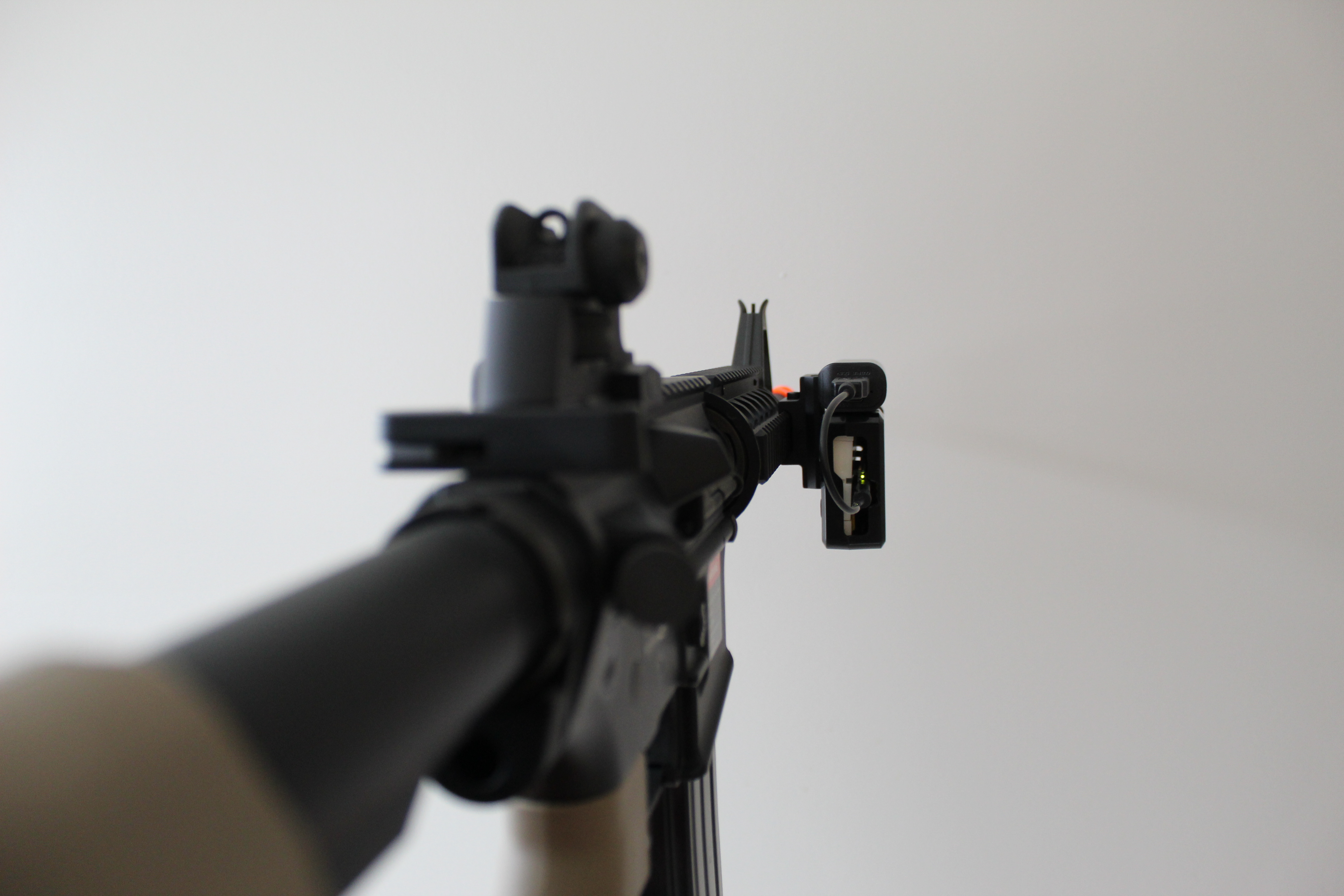Project Info
Client
Department of Defense (B2G)
Service
Advanced Nano-Electronic Solutions & Mixed Reality Experiences
Sector
Defense
Compilation
C++, C#, Bluetooth, Infrared, SLAM
Firearms Training Simulator
In the demanding world of military training, the integration of
cutting-edge technology has traditionally lagged, often relying
on antiquated systems such as the FATS (Firearms Training
Simulator), which have become progressively obsolete. The advent
of Augmented Reality (AR) technology promised a paradigm shift,
yet, until recently, its potential remained underexploited due
to developmental limitations.
A forefront software development enterprise was commissioned to
pioneer a groundbreaking project named "Terran." The objective
was to develop an AR-based simulated weapons and tactics
training platform that leveraged the Microsoft HoloLens 1,
augmented with infrared tracking capabilities. Terran was
conceptualized to operate similarly to the PEQ-16, a laser
targeting module capable of being mounted on any Picatinny rail
for versatile field or indoor application.
The project faced formidable challenges from its inception.
Paramount among these was the necessity for flawless tracking;
the simulation needed to achieve unparalleled realism, ensuring
that users' interactions with the virtual environment felt
utterly authentic. Moreover, the AR interface had to facilitate
intuitive lateral communication, mimicking the complexities of
real-life military operations.
The solution, Terran, emerged as a state-of-the-art live
simulation environment. It encompasses a comprehensive suite of
scenarios designed to enhance proficiency in all facets of
weapons handling, from basic operation to immediate and remedial
action. This case study illustrates not only the technical
prowess of the development team but also its contribution to the
evolution of military training methodologies, where traditional
barriers are transcended through innovative technological
solutions.
Known Challenges
At the outset of the Terran project, the team faced the critical
challenge of integrating Augmented Reality (AR) into a military
training solution that was both universally compatible with any
Picatinny rail system and capable of overcoming the inherent
limitations of AR technology. The choice of infrared for
tracking accuracy brought with it the additional challenge of
environmental limitations, notably the interference caused by
sunlight in outdoor settings. Moreover, the constraints imposed
by AR technology—particularly in terms of users' perception and
peripheral vision—demanded a solution that provided a fully
immersive, 360-degree training experience.
To address these challenges, the team embarked on a focused
development strategy, prioritizing the core components essential
for a viable prototype. The selection of Unity 3D as the
development platform enabled rapid prototyping, allowing the
team to iterate quickly and efficiently. This choice was
complemented by the utilization of Visual Studio for Nano
Electronics, specifically for Arduino programming, and the
integration of thermal cameras to enhance tracking fidelity.
This strategic approach allowed the team to navigate the
project's technical complexities effectively. By leveraging
these technologies, the team was able to swiftly address and
resolve edge cases, thus facilitating the seamless transition
from prototype to production within the stringent demands and
tight timelines dictated by the project's scope. This case study
exemplifies our methodical problem-solving prowess and its
ability to deliver innovative solutions under challenging
constraints.
The Magic behing the Technology
Incorporating thermal imaging and infrared tracking technologies was critical in mastering Terran's simulation accuracy protocols, particularly under diverse environmental lighting conditions. Achieving seamless integration of these technologies with the ARCore framework allowed for a stable approach. Pro Stack's engineers developed middleware solutions and harnessed existing libraries to facilitate direct communication between the sensory input from thermal and infrared sources and the virtual scenarios attached to the PEQ-16 replacement. This ensured a high degree of accuracy in tracking user movements and interactions within the AR Simulator. Furthermore, ensuring Terran's compatibility with any Picatinny rail system introduced a layer of complexity that demanded a modular and flexible design approach. The use of 3D printing made prototyping quick and painless.




Infrared and Thermal Tracking
Working with infrared (IR) technology for tracking in the Terran
product necessitated a sophisticated approach, blending both the
physical hardware intricacies with the nuances of software
integration. The cornerstone of our solution was the Adafruit
MLX90640 IR Thermal Camera, a compact module equipped with a
dense array of 768 IR sensors, forming images through individual
temperature readings over I2C communication. This sensor offered
the detailed thermal imaging capabilities we needed, operating
within a temperature range of -40 to 300°C with an accuracy of
±2°C and a refresh rate conducive to real-time
interaction.
The process began with harnessing the Adafruit MLX90640's
potential by integrating it into our system through Arduino, a
choice influenced by Arduino's versatility and the availability
of robust pre-defined libraries for rapid development. The
MLX90640's compatibility with Arduino's I2C pins allowed for
straightforward connectivity, simplifying the data transmission
between the thermal camera and our processing unit. Our
engineers focused on optimizing the thermal camera's settings,
such as the resolution and refresh rate, to match the Terran
system's performance requirements, ensuring that thermal data
was captured and processed efficiently without overburdening the
system's computational resources.
The integration
also involved developing custom software routines to interpret
the thermal images into actionable data within the AR
environment, a task that required deep dives into the Adafruit
and Arduino libraries. By leveraging these libraries, we could
focus on refining the Terran's simulation fidelity rather than
the underlying mechanics of thermal imaging. This approach not
only accelerated the development process but also ensured that
Terran benefited from the latest advancements in IR tracking
technology, providing a highly responsive and immersive training
experience that could adapt to a wide range of environmental
conditions

CQB Trainer Summary
The Terran project represents a pioneering step in military training simulations, utilizing advanced augmented reality (AR) technology to provide immersive and realistic training environments. At its core, Terran integrates the Adafruit MLX90640 IR Thermal Camera with Arduino for precise infrared tracking, addressing the challenges of environmental variables and ensuring high-fidelity simulations. This integration, combined with a seamless AR interface and compatibility with any Picatinny rail system, enables real-time interactions and efficient data processing. The system’s modular design facilitates rapid prototyping and adaptation to various military hardware, setting a new standard for realism in tactical training simulations
